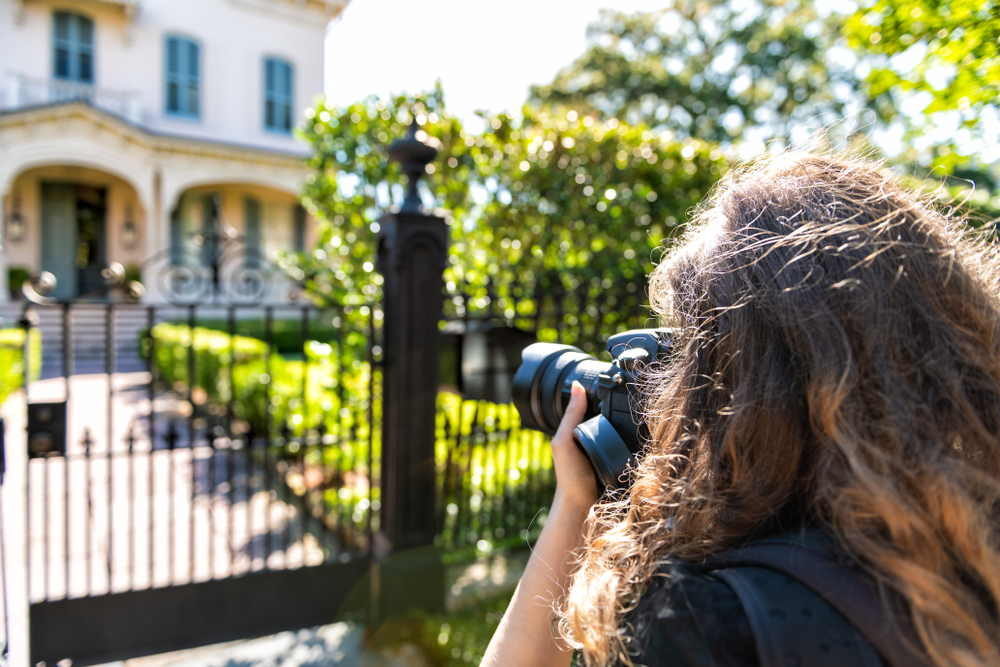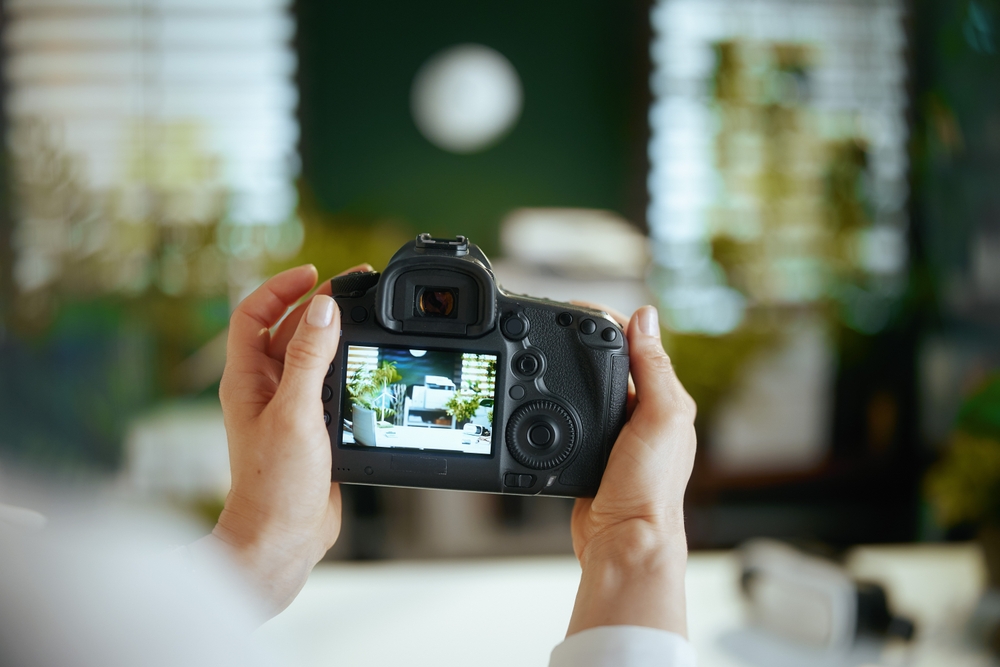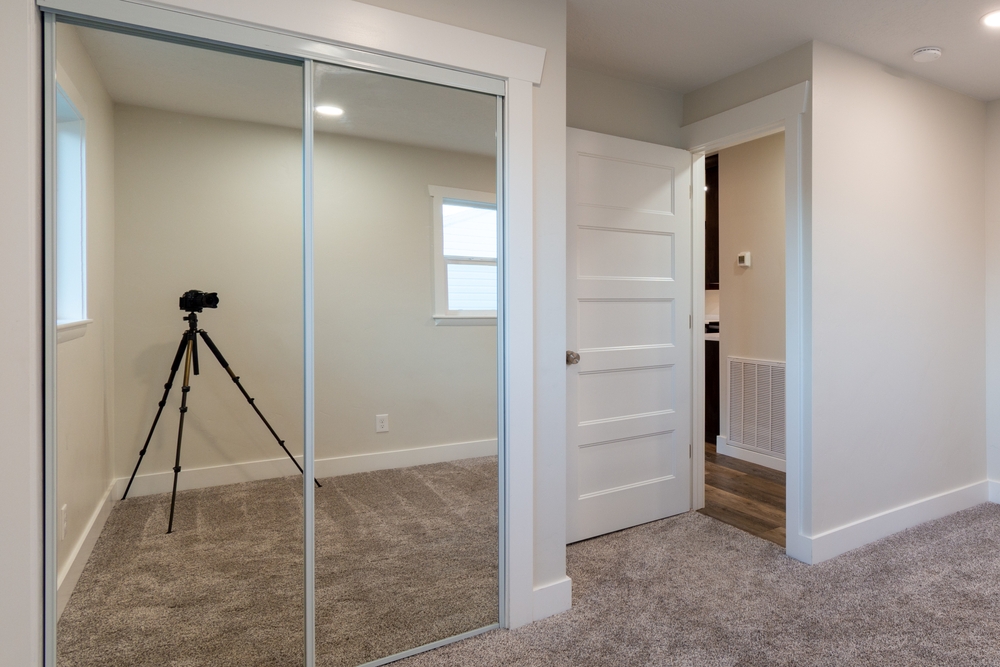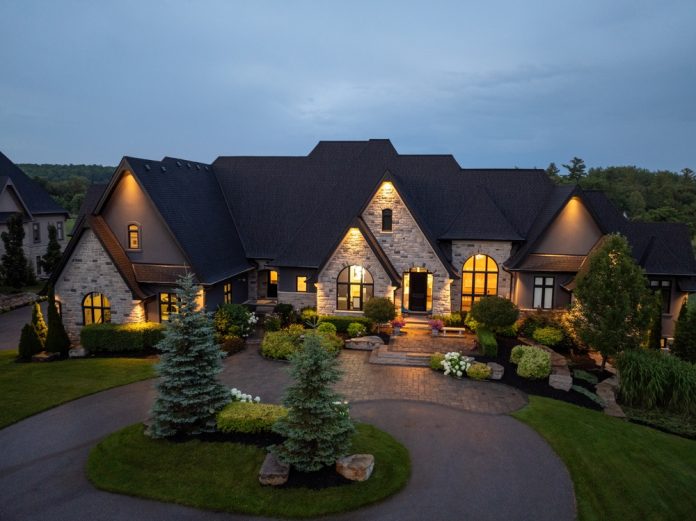In today’s competitive real estate market, high-quality photography isn’t just a bonus—it’s a necessity. Buyers browse through listings online before scheduling a showing, and stunning visuals can make or break a sale. A well-lit, sharp, and properly composed image can entice buyers, while a poorly captured photo can leave a property lingering on the market for weeks.
If you’re looking to step up your game, having the right real estate photography gear is essential. The right tools not only enhance image quality but also improve workflow efficiency. In this guide, we’ll break down the must-have equipment to help you create professional, magazine-worthy real estate images that attract buyers and impress clients.
Table of Contents
- Real Estate Photography Gear Begins With the Right Camera for the Job
- Wide-Angle Lenses: Capturing More in Every Shot
- Your Real Estate Photography Gear Should Include a Good Tripod
- Flash and Lighting Equipment: Enhancing Indoor Shots
- A Drone is a Must-Have Addition to Your Real Estate Photography Gear
- Editing Software and Accessories: Perfecting the Final Image
- Invest in the Right Gear for Improved Results
Real Estate Photography Gear Begins With the Right Camera for the Job

Photo by Andriy Blokhin via Shutterstock
A high-quality camera is the foundation of great real estate photography. While smartphone cameras have improved significantly, a dedicated mirrorless or DSLR camera will provide the resolution, dynamic range, and flexibility needed for professional results.
When choosing a camera for real estate photography, consider a full-frame sensor for better image quality, especially in low light. The Sony a7 IV, Canon EOS R8, and Nikon Z6 II are excellent options, offering high resolution, good dynamic range, and solid low-light performance. If budget is a concern, an APS-C camera like the Canon EOS R7 or Sony a6700 can still deliver impressive results.
Key features to prioritize:
- High resolution (24MP or more) – Captures fine details for large prints and online listings.
- Good dynamic range – Handles bright windows and dark interiors effectively.
- Reliable autofocus system – Ensures crisp images, even in challenging lighting.
Pro Tip: No matter the camera you decide to buy, purchasing a used one is a smart move. Work with a trusted online platform like MPB to find yourself a great camera at a reduced price and enjoy features like a six-month warranty and a seven-day return policy to give you peace of mind.
Wide-Angle Lenses: Capturing More in Every Shot

Photo by Alliance Images via Shutterstock
A wide-angle lens is crucial for real estate photography gear because it allows you to capture entire rooms in a single frame. The right lens makes spaces look larger, more inviting, and well-proportioned.
For full-frame cameras, consider lenses like the Canon RF 15-35mm f/2.8L IS USM, Sony FE 12-24mm f/4 G, or Nikon Z 14-30mm f/4 S. If using an APS-C camera, look into Sigma 10-20mm f/3.5 or Tamron 11-20mm f/2.8.
Why wide-angle lenses matter:
- They maximize space perception, making rooms appear more expansive.
- A focal range of 12-24mm (or equivalent) ensures versatility for tight spaces.
- Minimal distortion keeps vertical lines straight for a natural look.
Your Real Estate Photography Gear Should Include a Good Tripod

Photo by Get Lost Mike via Shutterstock
A sturdy tripod is one of the most overlooked but essential pieces of real estate photography gear. It allows for slow shutter speeds in low light, ensures consistency between shots, and helps with advanced techniques like HDR photography.
Look for tripods with:
- Adjustable height – Allows flexibility in shooting angles.
- Ball head or pan-tilt head – For precise composition adjustments.
- Durability – Carbon fiber is lightweight and strong, while aluminum is budget-friendly.
Great options include the Manfrotto 055 Aluminum Tripod and Peak Design Travel Tripod. Investing in a remote shutter release can further minimize camera shake, leading to ultra-sharp images.
Flash and Lighting Equipment: Enhancing Indoor Shots
As Nathan Cool Photo discusses in the video above, lighting is one of the biggest challenges in real estate photography. Natural light is ideal, but supplemental lighting is often necessary to balance interior brightness and prevent dark corners.
An off-camera flash setup can dramatically improve indoor shots. Godox AD200Pro and Profoto A10 are excellent choices for their power and reliability. Pairing flashes with MagMod modifiers can help soften the light for a more natural effect.
Why lighting gear is essential:
- Reduces harsh shadows and overexposed windows.
- Creates even lighting across large spaces.
- Enhances details in dimly lit areas like basements or hallways.
A multi-flash setup or bounce lighting can help maintain a natural look while filling in darker areas of a room.
A Drone is a Must-Have Addition to Your Real Estate Photography Gear

Photo by DELBO ANDREA via Shutterstock
Drones have become a game-changer in real estate photography gear. They offer stunning aerial views that provide context to the property’s surroundings, especially for large homes, estates, and waterfront properties.
Top choices for real estate drone photography include the DJI Mini 4 Pro and the DJI Mavic 3. These drones provide high-resolution imagery, intelligent flight modes, and stable flight control.
Benefits of using a drone:
- Showcases the entire property layout in a single frame.
- Adds aesthetic value to listings with unique perspectives.
- Highlights nearby amenities and landscapes for potential buyers.
Before using a drone, ensure compliance with FAA regulations and obtain any necessary certifications.
Editing Software and Accessories: Perfecting the Final Image

Photo by Rawpixel.com via Shutterstock
Even the best real estate photography gear won’t guarantee flawless images straight out of the camera. Post-processing is a critical step in real estate photography to correct exposure, remove lens distortions, and enhance colors.
Essential software includes Adobe Lightroom and Photoshop for basic adjustments, as well as HDR merging tools like Photomatix Pro. Additionally, consider:
- Remote shutter release – To prevent camera shake when shooting on a tripod.
- ND filters – Helps balance exposure when shooting exteriors on sunny days.
- X-Rite ColorChecker – Ensures accurate color representation.
Proper editing enhances images while maintaining a natural look, ensuring properties are displayed in their best light without misleading potential buyers.
Invest in the Right Gear for Improved Results

Photo by Fotoluminate LLC via Shutterstock
Investing in high-quality real estate photography gear is essential for producing professional, eye-catching images that attract buyers. A combination of a reliable camera, a wide-angle lens, a sturdy tripod, lighting gear, a drone, and editing software ensures every shot is sharp, well-exposed, and visually compelling.
As real estate photography continues to evolve, staying up to date with the latest tools and techniques will keep you ahead of the competition. With the right gear and a solid understanding of real estate photography principles, you’ll be well-equipped to create stunning images that help properties sell faster and at higher prices.
And remember—buying used gear enables you to get more of what you need (and better quality gear, too) without busting your budget. I’ve worked with MPB for years and have had a good experience each time I’ve bought, sold, or traded gear in. So, get geared up and save some cash by making smart investments in quality used gear!
Our articles might have affiliate links and the occasional sponsored content, but don’t sweat it – if you buy something, we get a little kickback at no extra cost to you, and we only hype products we truly believe in!
Learn More:
Hero Photo by Fikret Eskisarli via Shutterstock

